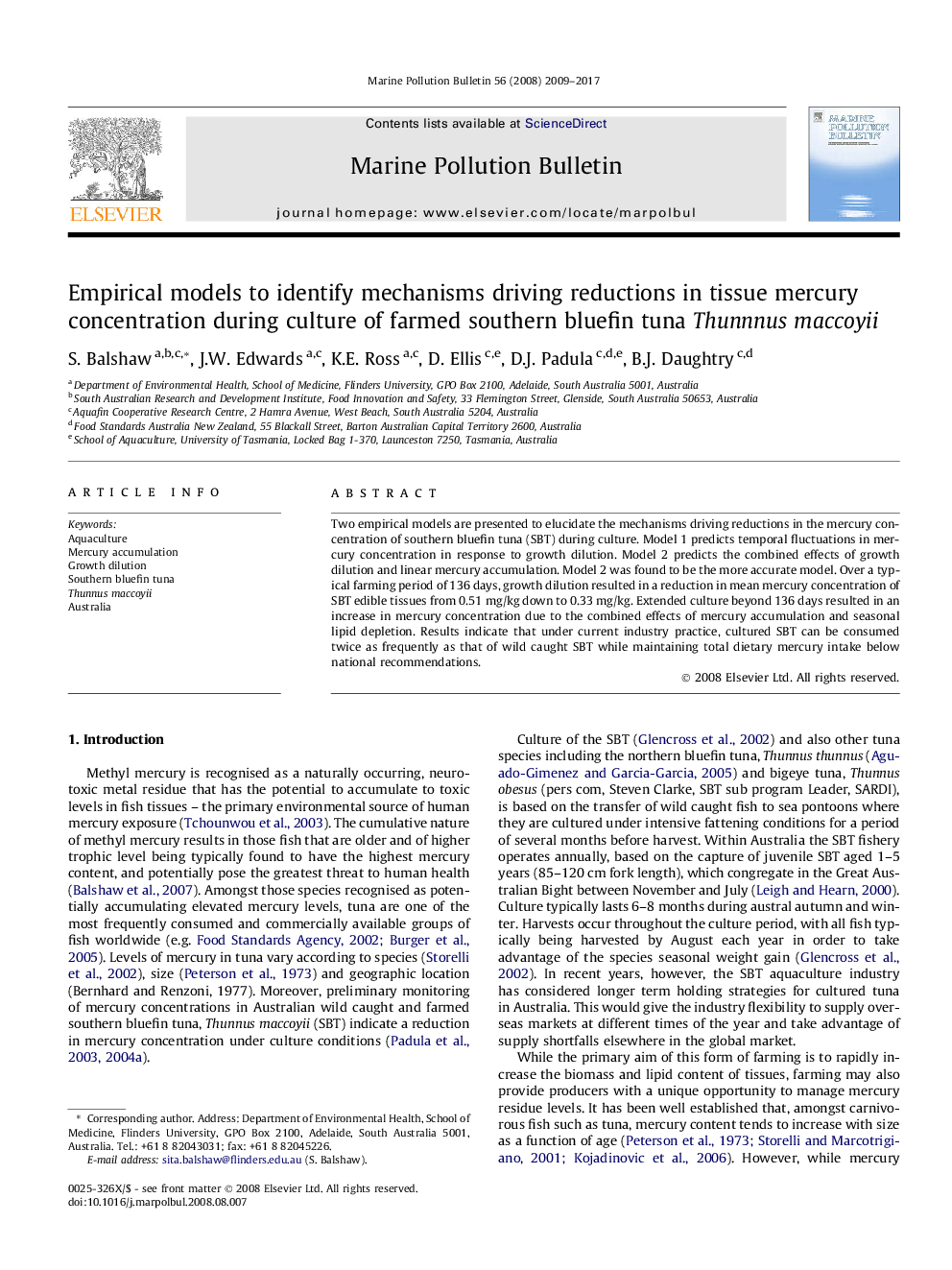| Article ID | Journal | Published Year | Pages | File Type |
|---|---|---|---|---|
| 4477409 | Marine Pollution Bulletin | 2017 | 9 Pages |
Two empirical models are presented to elucidate the mechanisms driving reductions in the mercury concentration of southern bluefin tuna (SBT) during culture. Model 1 predicts temporal fluctuations in mercury concentration in response to growth dilution. Model 2 predicts the combined effects of growth dilution and linear mercury accumulation. Model 2 was found to be the more accurate model. Over a typical farming period of 136 days, growth dilution resulted in a reduction in mean mercury concentration of SBT edible tissues from 0.51 mg/kg down to 0.33 mg/kg. Extended culture beyond 136 days resulted in an increase in mercury concentration due to the combined effects of mercury accumulation and seasonal lipid depletion. Results indicate that under current industry practice, cultured SBT can be consumed twice as frequently as that of wild caught SBT while maintaining total dietary mercury intake below national recommendations.
